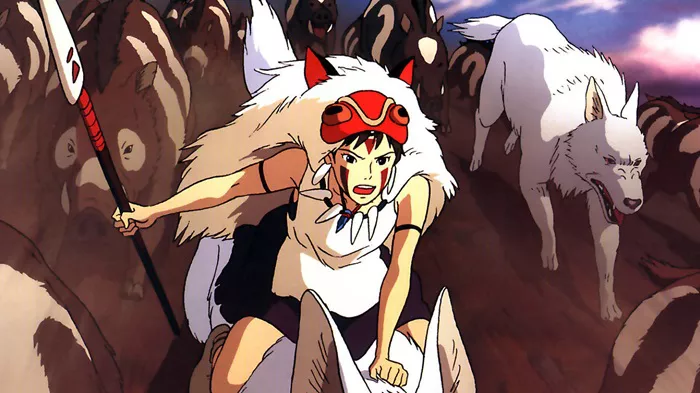Princess Mononoke,” directed by the legendary Hayao Miyazaki and produced by Studio Ghibli, stands as a pinnacle of animation and storytelling, deeply rooted in themes of environmentalism, conflict, and harmony between humans and nature. Central to its narrative are the majestic and mystical wolves that accompany San, the eponymous Princess Mononoke. This article delves into the names, roles, and symbolic meanings of these wolves, enhancing our understanding of their contribution to the film’s profound messages.
The Wolves of Princess Mononoke
“Princess Mononoke” features a trio of wolves, each distinct in character and purpose. They are not merely animals but spiritual beings that underscore the film’s thematic exploration of the natural world’s sacredness and complexity. Here, we explore each wolf’s identity and significance.
Moro: The Leader of the Pack
Moro, a giant, intelligent wolf god, is the leader of the pack and the adoptive mother of San. At 300 years old, Moro represents the ancient wisdom and strength of nature. Her name, while not extensively dissected within the film, carries with it connotations of tradition and mysticism in Japanese culture. Moro is depicted as both nurturing and ferocious, embodying the dual nature of the wild — it is both life-giving and perilous.
Moro’s character is pivotal in understanding the film’s environmental message. She fiercely opposes the human encroachment led by Lady Eboshi and the Iron Town residents, who threaten the forest’s sanctity by clear-cutting and mining. Moro’s resolve in fighting against human intrusion highlights the theme of industrialization’s impact on nature, making her a symbol of environmental resistance.
San: The Human Raised by Wolves
Though not a wolf by birth, San embodies the spirit and essence of the wolf pack. Raised by Moro from infancy after being abandoned by her human parents, San considers herself a wolf. Her name, meaning “three” in Japanese, might hint at her role within her adopted family as one of three — alongside her wolf siblings. San’s character is a bridge between the human and animal worlds, though she predominantly identifies with the latter, viewing humanity as a corrupting force against nature.
San’s interactions with Prince Ashitaka, the film’s protagonist, serve to explore themes of identity, belonging, and cultural collision. She is torn between her innate human qualities and her loyalty to the wolves, reflecting the broader conflict between the natural world and human civilization. San’s dual identity enriches the narrative, adding layers of complexity to the environmental discourse.
The Wolf Cubs: Echoes of the Future
Accompanying Moro and San are two unnamed wolf cubs, often considered as background characters yet significant to the pack’s depiction. These cubs represent the future generation of wolves, symbolizing hope and the continuation of natural life cycles amidst human threats. They play a more minor, yet poignant role in highlighting the stakes of the environmental destruction portrayed in the film.
The cubs’ interactions in the film, though less prominent, serve to underscore the familial bonds within the wolf pack and by extension, the interconnectedness of all life forms. Their presence reinforces the message that the fight to protect the environment is not just about preserving the present but ensuring the survival and well-being of future generations.
Symbolism and Themes
The wolves in “Princess Mononoke” are not just characters but are imbued with deep symbolic meanings. They represent various aspects of nature — its majesty, its vulnerability, and its indomitable will. Moro, as a wise and fierce protector, embodies the resistance against the destructive forces of industrialization. San, caught between her human origins and her loyalty to the wolves, symbolizes the potential for harmony and understanding between humans and nature.
Cultural Resonance
The portrayal of wolves in “Princess Mononoke” also taps into deeper cultural and mythological roots. In many cultures, wolves are seen as symbols of warriors, guardians, and spirits of nature. In Japanese folklore, wolves are often revered as protective deities or messengers of the gods, which resonates with Moro’s role as a protector of the forest and its deity-like status.
Conclusion
The wolves of “Princess Mononoke” serve as crucial narrative and thematic elements, enriching the film’s exploration of environmental issues and human-animal relationships. Moro, San, and the wolf cubs are not merely characters but symbols of larger forces at play in the struggle between industrial progress and ecological preservation. Through these wolves, Miyazaki invites viewers to ponder the complex, often fraught relationships humans have with the world they inhabit — urging a call for understanding, respect, and coexistence with nature. As “Princess Mononoke” continues to inspire and provoke thought among audiences worldwide, the wolves remain emblematic of the film’s enduring impact and relevance.

